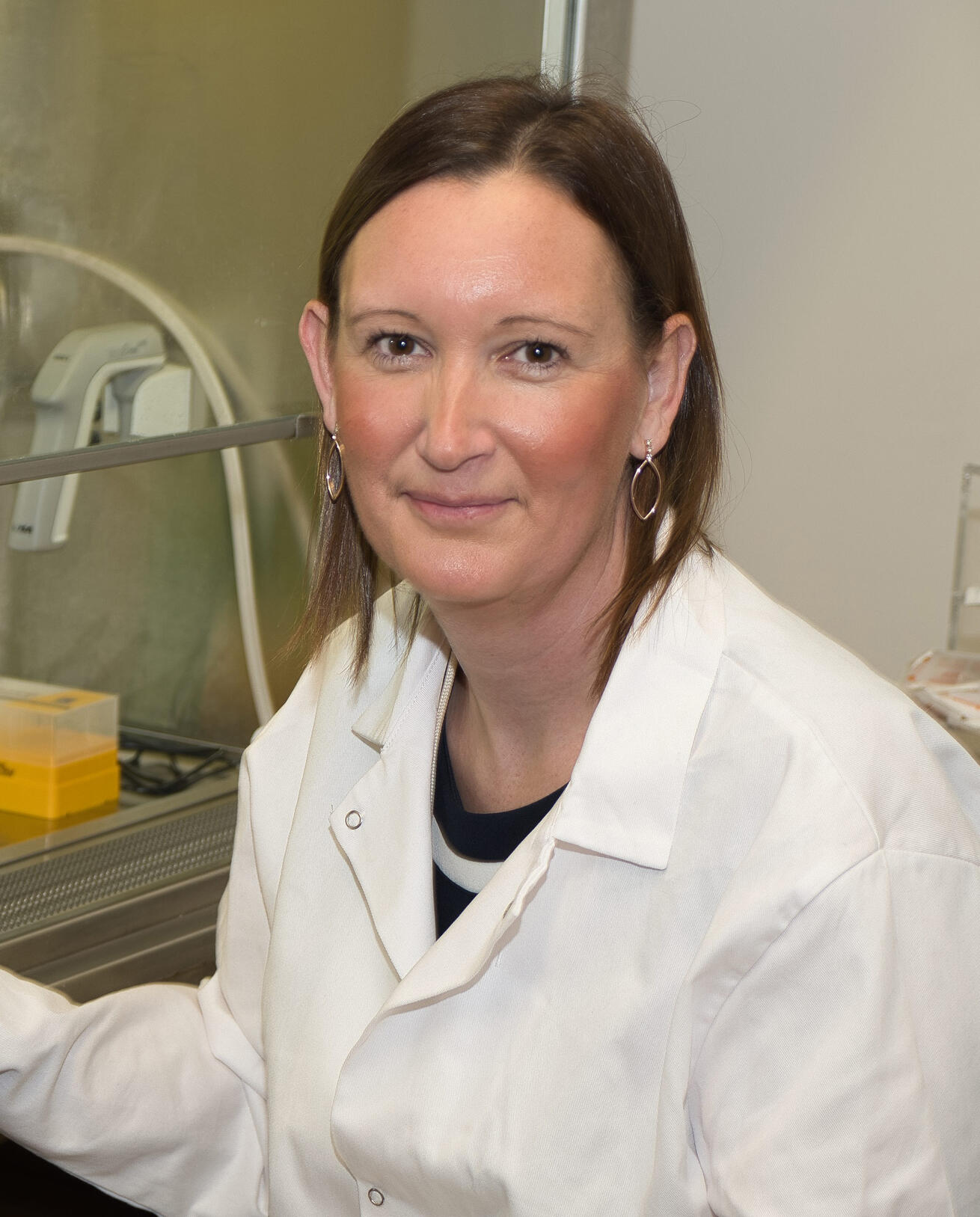Findlay Research Lab
Research Lab of Dr. Victoria J. Findlay
Research Goals
NIH’s mission is to seek fundamental knowledge about the nature and behavior of living systems and the application of that knowledge to enhance health, lengthen life, and reduce illness and disability. The Findlay lab has positioned itself to be able to deliver on all of these fronts through her establishment of a multidisciplinary network of collaborations of basic and clinical scientists focused on hormonal health and education with the ultimate goal to improve the health of all people and to eliminate health disparities.
Current Lab Members

Bradley Krisanits, PhD
Lab Manager
Postdoctoral Fellow

Bradley Krisanits, PhD
Lab Manager
Postdoctoral Fellow
Department of Surgery

Aliaa Jackson, MD
Research Scientist

Aliaa Jackson, MD
Research Scientist
Department of Surgery

Jackson Lane, BS
Research Specialist

Jackson Lane, BS
Research Specialist
Department of Surgery

Gowtami Aishwarya Panguluri, BS
PhD Student

Gowtami Aishwarya Panguluri, BS
PhD Student
Department of Surgery
Research Focus
The Findlay Research laboratory has several ongoing research projects focused on hormonal health in men and women with an overarching goal to increase education within the community and reduce cancer health disparities.
I. CANCER PREVENTION: PUBERTY
Chronic consumption of AGEs represent an early lifestyle factor leading to increased breast cancer risk.
The focus of this study is on early life factors and their effect on mammary development during puberty and how they relate to increased breast cancer risk. At this time, we do not understand what biological changes occur during pubertal mammary development which leads to a greater risk of developing cancer in later life. Identifying the molecular mechanisms that cause aberrant pubertal mammary development may lead to defined strategies to reduce breast cancer burden in later life. As our bodies use the sugars that we consume for energy they generate waste chemicals known as metabolites. One such group of metabolites is known as advanced glycation end products or AGEs for short. Critically apart from their production as a result of the breakdown of sugar, AGE’s are also formed through the ingestion of food and by external environmental factors such as lack of exercise. Changes in this dynamic equilibrium causes protein dysfunction, protein crosslinking, decreased genetic fidelity, altered gene expression profiles and aberrant cell signaling Our studies have identified in animal models that a diet high in AGEs significantly alters how the breast develops during puberty. The tumor microenvironment is now becoming recognized as having a major role in facilitating both mammary development and cancer progression, and that, alterations in stromal cell signaling can precede epithelial cell alterations and act as drivers of the tumorigenic process. Critically, the high AGE diet produces architecture in the breast that resembles pre-neoplastic lesions with hyper-proliferative structures and increased levels of stromal cells. We also show that AGE levels are significantly elevated in the circulation and tumor tissue of breast cancer patients and that AGE treatment alters cancer associated signaling pathways to promote breast tumor growth.
II. CANCER PREVENTION: POSTMENOPAUSAL WOMEN
The effects of time restricted feeding on AGE-RAGE signaling in women at high risk for breast cancer.
Pre-diabetes is associated with increased breast cancer risk. Recent studies have recognized a role for intermittent fasting, in the form of early time restricted feeding (TRF), in avoiding circadian de-synchrony to improve insulin resistance. TRF is an eating pattern that prolongs the overnight fasting duration by coordinating caloric intake with light-dark circadian rhythm. Prolonged nighttime fasting duration may be associated with reduced breast cancer and recurrence risk. The underlying mechanistic aspects of prolonged overnight fasting duration and relationship to breast cancer risk is not yet known. Advanced glycation end products (AGEs) are reactive metabolites that accumulate in tissues as we grow older. We now consume copious amounts of AGEs as part of the modern diet. The pathogenic effects of AGEs contribute to insulin resistance, diabetes and cancer through the aberrant activation of stress response pathways. A high impact finding of our animal studies is that dietary-AGE induced increases in breast tumor growth are restricted by TRF. Dietary-AGE mediated increases in breast tumor growth were dependent upon the stromal expression of the transmembrane receptor for AGE (RAGE). Soluble RAGE (sRAGE) is a broad term used to define various truncated forms of full length RAGE that are found in the circulation. It encompasses a group of tumor suppressive variants of the oncogenic full RAGE, thought to sequester AGE in the circulation by acting as a decoy receptor. The objective of this study is to assess the impact of TRF on AGE-RAGE toxicity in women at higher risk of breast cancer, and explore the mechanistic implications of TRF induced sRAGE in dietary-AGE mouse tumor models. It is essential to identify disease risk factors in order to modify therapies aimed at decreasing breast cancer risk in vulnerable populations. As the epidemic of diabetes continues to expand, increasing the number of women at high risk of breast cancer, identifying the mechanism and type of sRAGE increased in response to TRF will provide a platform for larger intervention studies. Such studies would be aimed at further defining the potential of targeting environmental AGE as a cancer prevention strategy through fasting.
III. CANCER PRGRESSION: TREATMENT
Targeting Caveolin-1 in the breast tumor microenvironment.
Stromal Cav1 loss is established clinically as a marker of poor prognosis in breast cancer: however, the mechanism of Cav1 loss remains unknown. Therapeutics that mimic Cav1 function have not been tested in breast cancer. We put forward an innovative mechanism as to how Cav1 is lost in the stromal compartment and how this loss may lead to increased CAF activation /recruitment into the tumor microenvironment. If these studies are successful, we will be able to utilize this model to explore therapeutic strategies to prevent or reverse the functional effects of Cav1 stromal loss on breast cancer progression. Our research shows that miR-204 levels are significantly elevated in breast cancer and that miR-204 overexpression negatively regulates Cav1 protein expression specifically in the stromal compartment both in vitro and in vivo. Preliminary work suggests this is mediated through a paracrine mechanism from epithelial cells to neighboring fibroblasts leading to a ‘CAF-like’ or ‘activated’ phenotype. Important for this study, we have developed novel therapeutic peptides derived from the Cav1 scaffolding domain (CSD) and have demonstrated both their ability to reverse pathological phenotypes both in vitro and in vivo. We hypothesize that increases in miR-204 and subsequent Cav1 loss in mammary fibroblasts leads to more aggressive tumor growth. Targeting the miR-204:Cav1 axis using novel therapeutic peptides derived from CSD will reduce aggressive tumor growth. Increases in extracellular crosstalk between epithelial miR-204 and stromal Caveolin-1 (Cav1) may represent an inherent molecular characteristic promoting breast cancer aggression through the increased recruitment and/or activation of cancer associated fibroblasts (CAFs).
IV. CANCER PREVENTION: LACTATION
The role of microRNA-204 and gestational diabetes in lactation outcomes.
The inability to sufficiently lactate (or lactation insufficiency) is a real and growing problem in the United States. Current estimates are 1-5% of mothers experience primary lactation failure. This represents between 40,000 and 200,000 women in the US alone. Human milk is considered the optimal food for all infants in the first six months of life, providing nutrition, protection from infections and in some cases death. A successful lactation outcome is directly impactful on both the mental health of the mother as well as the nutritional and ultimate health of the child. Currently, there are no tests to diagnose a lactation insufficiency and no approved medications to increase milk supply in women with a lactation insufficiency. The discovery of a biomarker of lactation insufficiency will allow for early intervention to maximize a successful lactation outcome. Therefore, this study has the potential to have a major impact on lactation outcome in all women. Our recent work has identified a novel role for miR-204 in lactation insufficiency. A high impact finding of our studies was that expression of miR-204 in lactating dams results in significantly lower pup weight, and in some cases pup death. We have identified PRLR and JAK2 as direct targets of miR-204 leading to a downregulation of the milk protein synthesis pathway (PRLR/JAK2/Stat5a) as a mechanism driving the observed lactation defect. miR-204 is also known to be important in diabetes, and we have shown that a commonly used diabetic drug, Metformin, targets miR-204 in our mouse models. As such, we have formed a new collaboration with Dr Meriam, MD at Yale School of Medicine who has an interest in women with gestational diabetes and effects of metformin on lactational outcomes. Together we aim to use our shared knowledge and skills to investigate the mechanism of miR-204 dysregulation in gestational diabetes and the impact of metformin on lactational outcomes.
V. CANCER CONTROL: BIOMARKER DISCOVERY
microRNAs as drivers of neuroendocrine differentiation in prostate cancer.
De novo neuroendocrine prostate cancer (NEPC) is rare constituting only 1% of all prostate cancer cases. However, recent studies have shown that individual cells within a prostate tumor can undergo a process termed neuroendocrine differentiation (NED) to become neuroendocrine-like. Studies have shown that androgen deprivation therapy (ADT) can drive NED leading to the development of the castrate resistant prostate cancer phenotype. These latter cancers are referred to as neuroendocrine prostate cancer (NEPC) or aggressive variant prostate cancer (AVPC). Transformation to a neuroendocrine phenotype is one proposed mechanism of resistance to contemporary AR-targeted treatments, is associated with increased tumor progression, poor prognosis, and is thought to represent ~25% of lethal prostate cancers. MicroRNA 204 (miR-204) has been shown to play a dual role in prostate cancer by playing an oncogenic role in AR negative cells representing NEPC and as a tumor suppressor in AR positive cells representing prostate adenocarcinoma. miR-204 is encoded within the TRMP3 gene and studies have demonstrated that expression of miR-204 and TRPM3 are positively correlated. Significantly, TRMP3 is amplified in 32% of NEPC cases. Two Cancer Cell papers recently demonstrated MYC as a driver of the neuroendocrine phenotype. We mined this whole genome analysis data set (cbioportal) and found that MYC is co-amplified and/or overexpressed in all NEPC tumors where TRPM3 is amplified. Follow up studies by this same group observed a significant decrease of SPDEF expression in their AVPC/NEPC clinical sample cohort when compared to prostate adenocarcinoma. Of interest, as SPDEF was the first direct target of miR-204 that we identified in both breast and prostate cancer. A retrospective analysis suggested that circulating miR-204 levels are elevated in African American men with prostate cancer when compared to European American men. African American (AA) men have a 2-4 fold increase in mortality rate when compared to Non Hispanic White (NHW) prostate cancer patients. Studies are emerging that demonstrate inherent genetic and molecular characteristics within tumors contribute towards the racial disparity. This study aims to examine the translational potential of miR-204 and the impact of miR-204 expression on promoting a more aggressive prostate cancer phenotype in vivo.
